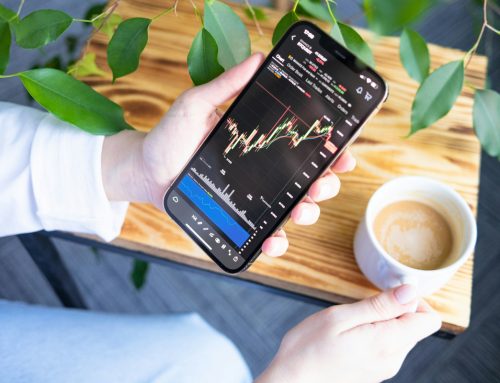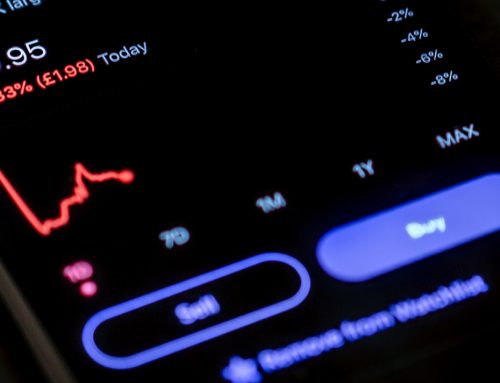What is implied volatility in options trading? If you’re searching for implied volatility options meaning, you’ve come to the right place. We’re going to simplify this seemingly complex topic for you here in our blog.
Implied volatility – or IV – is a driving factor of the premium for options contracts – and it speaks to just how likely price fluctuations are for a given stock. Finding the right IV based on your risk/reward ratio – and your specific options trading strategy – is imperative to seeing consistent, repeatable success. Below, we’ll fully unpack the implied volatility options meaning while explaining how you can use it to your advantage.
Featured Courses:
What is Implied Volatility in Options Trading? The Implied Volatility Options Meaning Explained
So, what is implied volatility in options trading? While it sounds complicated and daunting, the implied volatility options meaning is actually fairly simple – but incredibly important if you’re going to be an options trader.
The Implied Volatility Options Meaning Explained
Implied volatility (IV) is a crucial concept in options trading that measures the market’s expectation of how much an underlying asset’s price is likely to move in the future. It is an essential factor in determining an option’s price, as it reflects the level of uncertainty and potential risk associated with the underlying asset.
In simple terms, implied volatility is an indicator of the market’s expectation of price fluctuations for a particular asset. The higher the implied volatility, the more significant the anticipated price movement, and consequently, the higher the option premium. Conversely, lower implied volatility indicates smaller expected price fluctuations and typically results in a lower option premium.
How is Implied Volatility Displayed/Calculated?
Implied volatility is typically expressed as a percentage and is calculated using option pricing models, such as the Black-Scholes model. These models take into account factors like the current option price, the underlying asset’s price, the option’s strike price, time to expiration, and risk-free interest rates.
It’s important to note that implied volatility is not directly observable in the market. Instead, it is derived from the option’s price, which is determined by supply and demand. As a result, implied volatility can change over time as market conditions and investor sentiment shift.
One way to assess if implied volatility is high or low is by comparing it to the historical volatility of the underlying asset. If the current implied volatility is significantly higher than the historical volatility, it may be considered high. Conversely, if implied volatility is substantially lower than historical volatility, it may be deemed low.
While your unique trading strategy will deem what is “low” or “high” IV, here are some basic guidelines:
- Low IV: below 30%
- Average IV: between 30% and 70%
- High IV: above 70%
Now, why does this even matter? And how does it actually affect your decision-making as an options trader? We’ll explain more about why options implied volatility matter below.
Why is Implied Volatility Important for Options Traders?
Understanding implied volatility is important for options traders for several reasons.
First and foremost, it directly affects the premium you pay for your options contract. As you can imagine, options with higher implied volatility are inherently riskier from the option writer’s standpoint – and thus, premiums on these contracts will be higher as well. Conversely, lower implied volatility results in lower premiums as the likelihood of price fluctuations are lower.
But, beyond playing a role in the pricing of your options contracts, IV also helps traders gauge the level of risk associated with an options trade. High IV indicates higher risk, as the underlying asset’s price may experience larger fluctuations, while low IV suggests a lower risk due to smaller expected price movements. This is key for aligning your moves with your overall trading strategy – something we discuss in detail in our article covering options trading risks.
By analyzing implied volatility, traders can identify suitable trading strategies. For instance, in high IV environments, traders might focus on strategies that benefit from a decrease in volatility, such as selling options. In low IV environments, traders might choose strategies that profit from an increase in volatility, such as buying options.
You can learn more about when to sell options vs when to buy them in our blog. But for now, let’s answer a common question we see in regard to this topic…do I want implied volatility to be high or low as an options trader?
Do I Want Implied Volatility to be High or Low as an Options Trader?
As an options trader, whether you want implied volatility to be high or low depends on your specific trading strategy and the type of options positions you hold. There isn’t a one-size-fits-all answer, as the ideal IV environment varies based on your market outlook and the objectives of your trades. This goes back to writing vs buying options contracts.
But beyond your specific options trading strategy, it’s important to note that there is a direct correlation between IV and profitability.
From the option buyer’s point of view, a high IV sounds favorable as it suggests you will see price fluctuations that could work out in your favor. As a result, you’ll have to pay a higher premium for the contract. Now, you could find contracts with lower premiums – but these typically have a lower likelihood of ending up in the money.
So in saying this, it’s important to consider your own risk tolerance and goals as a trader. If you want to earn higher profits in buying options contracts, you need to take on more risk by purchasing contracts with lower IV. These will have more room for profit.
On the other hand, if you’re focused on playing it safe, contracts with high IV are typically better from the option buyers’ point of view. They cost more in premium which will cut into your profits, but you’re much more likely to see favorable price movement.
Tips for Using Options Implied Volatility to Your Advantage in Trading
You should now have a basic understanding of the role options implied volatility has in your strategy. Whether you’re buying or selling contracts, trading calls or puts, it will influence your risk/reward ratio. Before we wrap things up, we want to leave you with a few tips for using options implied volatility to your advantage.
- Understand IV Trends: as IV increases, so too do the premiums on those options. As IV falls, so too do the premiums on those options. And anytime you notice the IV on your options contract is at or near an all-time high/low, understand that it will soon revert to its average.
- Know What Causes High/Low IV: When IV is particularly high or low, there is typically a reason for it. For example, the IV for a stock will often rise as a result of rumors related to mergers/acquisitions or product releases. You’ll also see higher IV when companies prepare to announce earnings. As other traders seek to capitalize on these events/news that drive stock prices up/down, premiums will rise.
- Buy Low IV, Sell High IV: In general, options contracts with low IV are more attractive from the buyer’s standpoint as the premium is much lower. You’ll be able to enjoy higher profitability with these types of contracts. On the other hand, sellers tend to benefit from higher IV – as they can charge a much higher premium on these contracts. Ultimately, though, it’s up to you to determine what risk/reward ratio makes sense for you.
The benefit of trading stock options is that you can make money no matter what the stock market is doing – and you can use IV to help you do just that.
When IV is high, you’re in a position to earn higher premiums on contracts you write in your favor. When it’s low, you stand to gain from being the options buyer. Learn more about trading stock options for beginners in our blog – otherwise, it’s time to wrap this conversation up.
Final Thoughts on the Implied Volatility Options Meaning
While you came here wondering – what is implied volatility in options trading? – you should now feel a lot more confident in what this representation means and why it matters to options traders.
If you want to learn more about how stock options work, we encourage you to explore our blog. You can learn options trading from the pros here at VectorVest as we discuss topics like taxes on options trading, what does it mean to exercise an option, what happens when stock options expire, how to pick stocks for options trading, and more.
But beyond our helpful resources on how to trade stock options, you can harness the power of our stock analysis software to uncover winning opportunities on autopilot.
The system has outperformed the S&P 500 by 10x for two decades and counting – and it can help you do the same in your own trading strategy. It simplifies your process by telling you what to buy, when to buy it, and when to sell it. No more guessing games, no more emotion clouding your judgment. Just follow the system to win more trade with less work. You can see it in action with a free stock analysis today.
And then, armed with the VectorVest system and your newly discovered knowledge on options implied volatility, supercharge your success as an options trader!
Featured Courses:






Leave A Comment